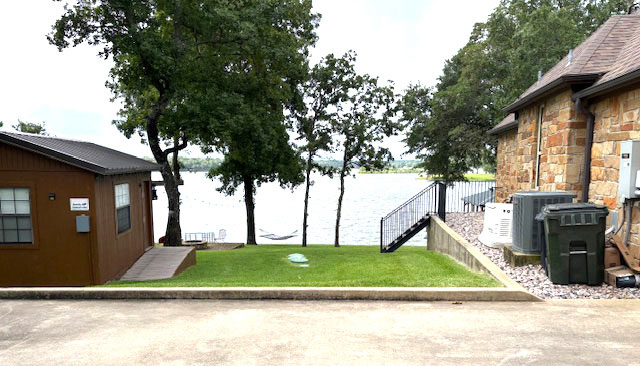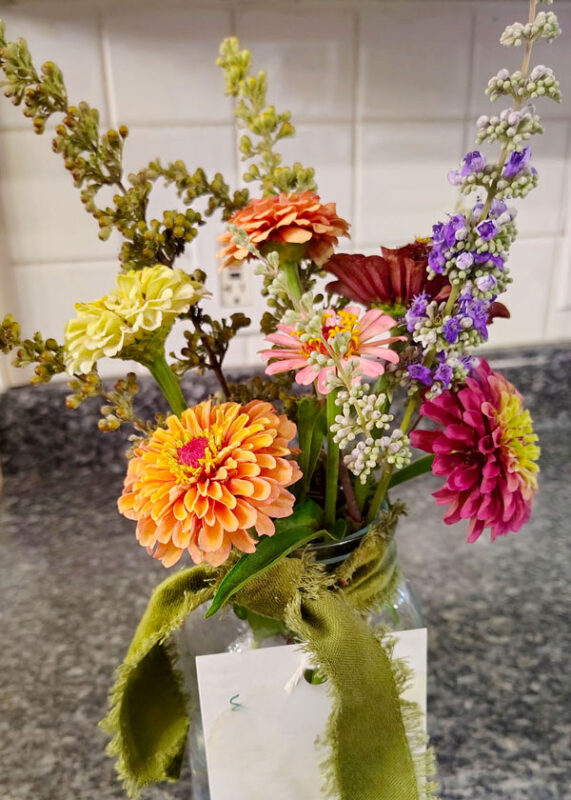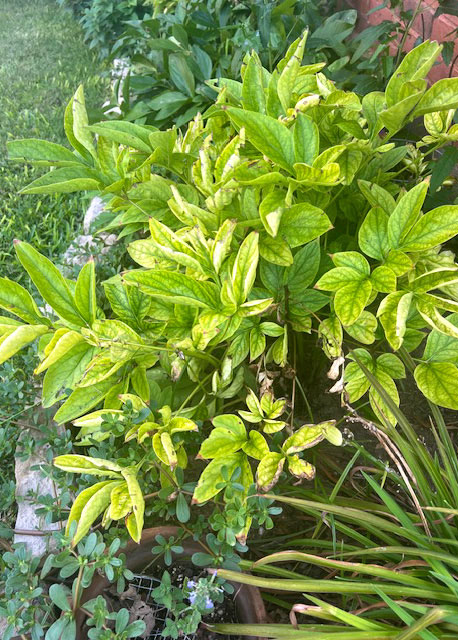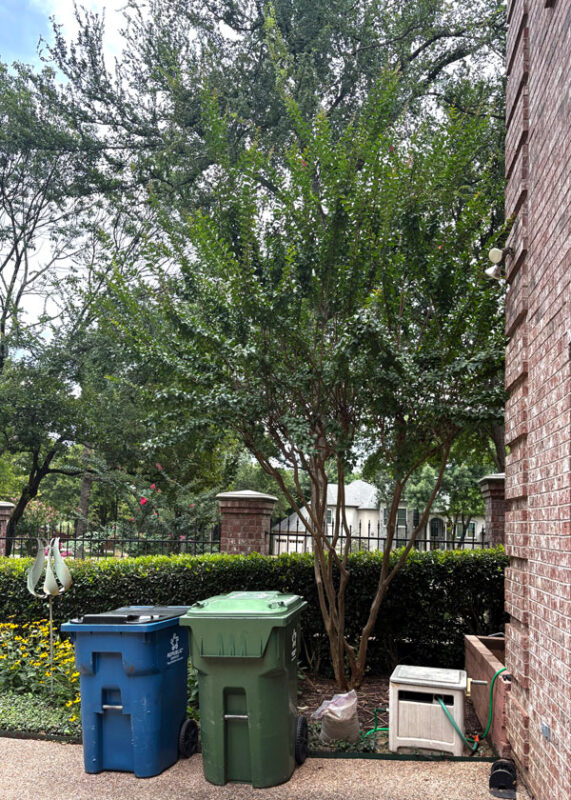Q&A – Ask Neil: July 24, 2025
(Please read these instructions carefully.)
Before you post your question, please look at recent issues to see if someone else has already asked it. You might find your answer there.
How to submit your question…
(Note: You may need to allow a pop-up window to come up in order to get the link for sending your photo(s). If you have already submitted your question and didn’t see the pop-up window, please click here.)
• Click the link provided below to post your question. After you submit your question, a new window will pop up giving you the address to which you can e-mail a SHARP, HIGH-RESOLUTION PHOTO to accompany your question. Please DO NOT SEND THUMBNAIL PHOTOS in case I need to zoom in to see things.
• Click here to post your question.
• Please ONLY POST YOUR QUESTION ONE TIME. We can only accept a set number of questions each week, and when we get duplicates it costs other people their chances.
• One question per reader, please.
• Please use this only for posting questions – not for standard emails.
• Watch for your answer in the following week’s e-gardens.
• I choose those of greatest general interest. For example, plant IDs seldom make the cut.
• I must have your first name or initials.
• I must have your city or county. (Texas is a very large state.)
Important favor: I’ve been covered up so far this year with questions about live oaks losing chunks of bark. Rather than continuing to answer the same questions weekly, I’d ask that you look back to previous issues. You’ll find several replies that I’ve posted. Thanks!
QUESTION 1
WHAT IS EATING THE BUDS OF MY HARDY HIBISCUS?
Question: What is eating the buds on my hardy hibiscus and what can be done about it? Susan H., McKinney.
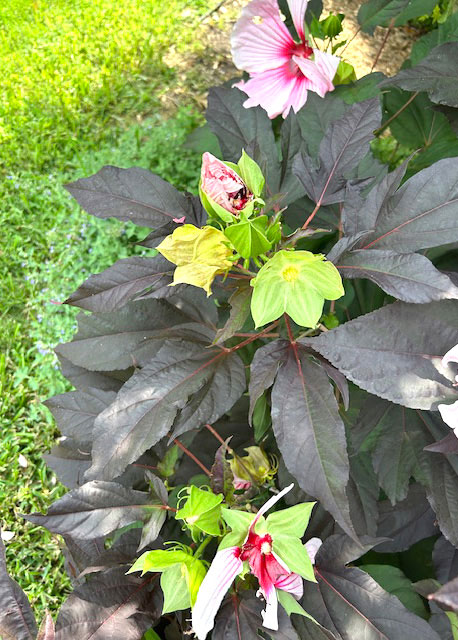
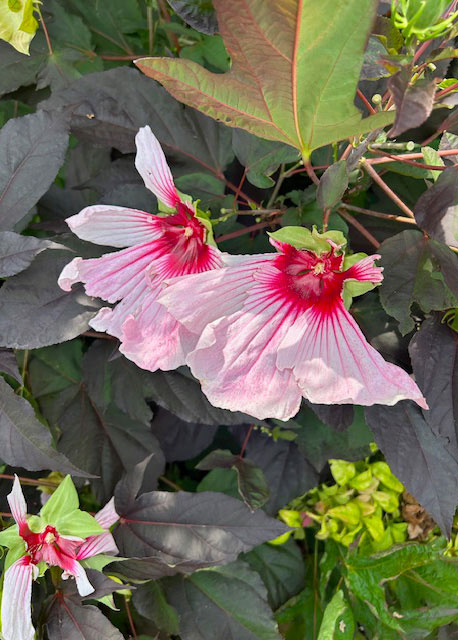
Images are clickable for larger views.
Answer: Two degrees in horticulture versus no degrees in entomology. Keep that in mind. However, I’m willing to give this a try. If this were katydid damage (a common chewing visitor to tropical and, to a lesser degree in my experience, hardy hibiscus), you would have seen the insects. They look like flattened grasshoppers with pronounced long legs and antennae. And, again in my experience, they tend to eat more leaf tissue than buds.
This looks more like a tunneling insect that has devoured the buds from the time they were very small. That brings me to our old friend of many names (depending on its place of employment). Corn earworms aka tomato fruitworms aka soybean podworms, sorghum headworms, and cotton bollworms. One pest. Many problems. Oh, did I mention “cotton bollworms?” Cotton is the sister to hibiscus – in the same plant family.
I did a little online research, and entomologists agreed with my guess by saying that this pest will chew holes in buds, flowers and tender foliage of hibiscus. They will tunnel into the flower buds and chew them from the inside out so that they fail to open, or when they do try to open, they have greenish droppings in and around the buds. Peak time of activity is listed as “now.”
The suggestion was made that you carefully open a few of the damaged buds and look for green or tan caterpillars with white hairs and light stripes. Those would be your cotton bollworms. The best treatment would be the organic Bacillus thuringiensis (B.t.) or Spinosad. Pick and remove all damaged and fallen buds to remove sources of further invasion.
QUESTION 2
WHAT QUICK-GROWING PRIVACY HEDGE WOULD YOU PLANT HERE?
Question: What type of quick-growing privacy hedge would you plant here? Marcie R., Athens.
Answer: Nellie R. Stevens holly if you want something 12 to 15 ft. tall. Oakland holly if you want something 10 to 12 ft. tall. Willowleaf holly if you want something 9-10 ft. tall. Plant them 2/3 as far apart as you intend to allow them to grow. Both of those plants could grow taller than those heights, especially in East Texas, but they could be maintained at the heights I gave you with annual trimmings if needed.
There are those who will say that I’ve given you choices that are not “quick growing.” Trust me! You do not want any of the fast-growing types of shrubs. They would quickly zoom past your desired heights and leave you with a mess to remove and replace. Run as fast as you can away from redtips, Japanese ligustrums, and bamboo. Some are likely to suggest those, and you would regret the day you planted them.
QUESTION 3
WILL HARVESTING CUTFLOWERS FROM SHRUBS HELP OR HARM FUTURE BLOOMS?
Question: My daughter and I have started a cut floral business. We’ve been cutting filler sprigs from my rose-of-Sharon, crape myrtles, and vitex here and there on a weekly basis as filler. Will this help or harm future blooms on these plants? Allison H., Burleson.
Answer: As long as you don’t cut too far back down the stems it shouldn’t hurt the plants at all. My concern would be if it ends up leaving stubs on the stems where new branches would develop awkwardly. Do know, too, that vitex plants bloom one big time per year in North Texas. You’ll get a reduced second bloom now through the fall. South Texans often cut their plants back significantly to encourage a second bloom, and for them it’s usually quite good. Crape myrtles will bloom a second and third time whether we prune them or not. However, if we prune them heavily, we’ll probably shut further blooms down. Trim them gingerly, one branch at a time. Althaeas are just about through for this year. It will all depend on the temperatures. Heat is their enemy.
Good luck with your design business. Plant some autumn sage (Salvia greggii) in its various colors, ornamental grasses, celosias, and gomphrenas.
QUESTION 4
WHY IS THIS ONE PEONY YELLOWING?
Question: Why is this one peony plant yellowing? I’ve had it 6 years. Others in the yard have a good green color. It produces blooms well. Susie S., Abilene.
Answer: This is iron deficiency. The classic symptoms I always give folks: “Yellow leaves with dark green vines, most prominent on the newest growth first.” For trees and shrubs that would mean the leaves at the outer ends of the branches. That’s hard to identify with peonies, but the symptoms are so very obvious otherwise that that’s where we need to start.
Apply a liquid iron and sulfur soil-acidifier product. The peony doesn’t need sulfur, but it needs what the sulfur will do to acidify the soil and thereby keep the iron in a soluble form. It becomes insoluble in alkaline conditions. Keep all iron products off masonry and painted surfaces to avoid staining. You could even spray the iron onto the leaves if there are instructions on how to do so. Again, keep it off anything that could be stained.
QUESTION 5
WHY WOULD ONE OF MY CRAPE MYRTLES NOT HAVE BLOOMED THIS YEAR?
Question: I have had three crape myrtles for 25 years. They have always bloomed well. Last winter I told my lawn guy not to trim them back based on your guidance. Two have bloomed normally, but one has not bloomed at all. Any ideas? No change to water, soil, or light. Melodye C., Flower Mound, Denton County.
Answer: This is almost like proving the negative – an impossible task. The one thing I can guarantee you is that it had nothing to do with the fact that the plant was not pruned back. I have worked with crape myrtles several days a week for the past 25 years, and topping has never helped one plant one bit. (Perhaps you haven’t had yours topped. I really can’t tell.)
Things that do keep crape myrtles from flowering properly:
• Excessive shade. They need to be grown in full sun. It appears from your photo that this one plant may have trees overhead that could be encroaching on its sunlight.
• Latent cold damage. 2, 3, and 4 winters ago we had serious winter damage done to some of our crape myrtles. That damage continues to manifest now.
• Are all three plants the same variety? We have planted many thousands of crape myrtles as part of our Crape Myrtle Trails of McKinney, and their dates of first bloom vary by 7 or 8 weeks. My favorite red (which is not reliably winter hardy for us in rural DFW) is Country Red. It doesn’t start blooming until mid- or late July. Think back to whether all three of your plants have bloomed at the same time in past summers.
• Crape myrtles bloom on new growth. Plants that are not producing vigorous new shoots will not flower as well as plants that are growing luxuriantly. I can only get a glimpse of the plant outside the fence, but its branches appear to have much more vigorous growth on them.
QUESTION 6
WHAT IS HAPPENING TO MY TAYLOR JUNIPER?
Question: We planted 4 Taylor junipers 12 years ago. This year one of them has several branches that have died, portions of branches that are browning and dying, and many branches that are drooping, though still green. The others are not. What is happening? Stephane R., Richardson.
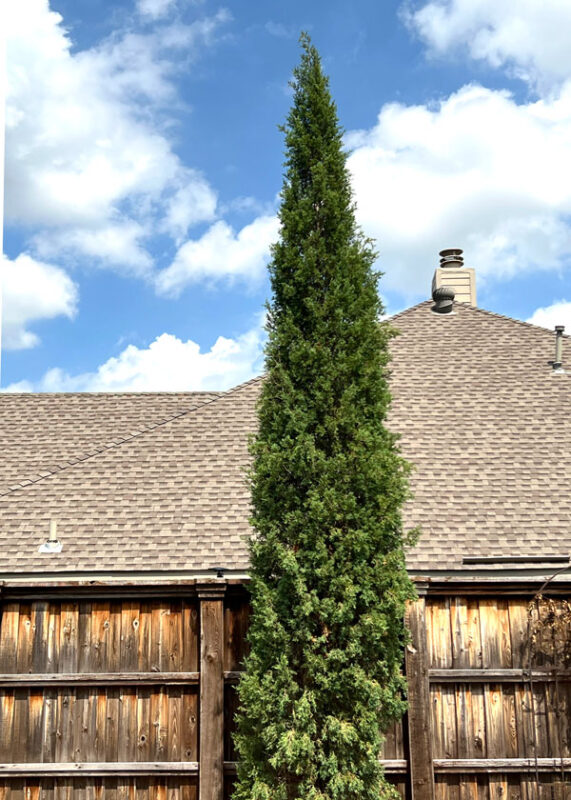
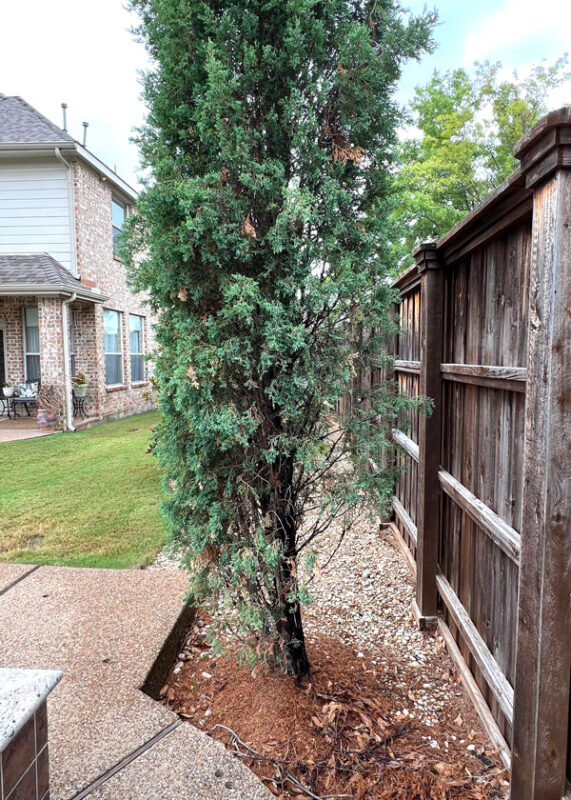
Images are clickable for larger views.
Answer: We’re going to have to work on this one together.
First, assure me that you have not applied anything to the gravel to stop weed growth, nor did you apply anything to the concrete to melt show/ice.
I didn’t think so.
Now I’m confused by the fence in the background of the two photos. I see a wire trellis behind the plant in the one photo, and it seems to have a dead vine on it. What killed that vine? And where is that trellis in the other photo? Are these the same juniper?
Has anything been applied to the fence that might have damaged this plant?
Does this end of the bed drain perfectly, or is there any chance that rainfall runoff might have accumulated there for a prolonged period?
Probably not.
I would give your plant a very thorough check for spider mites. Take a sheet of white paper on a clipboard. Clip off a 3-inch twig of browning (not brown) growth. Thump it one hard time onto the white paper and look for any of the little specks to start moving 10 or 15 seconds later. If spider mites are present they will be very tiny. You could set 20 of them side by side on the head of a pin. They will attack upright junipers and do this sort of damage. Repeat this every 12-16 inches up the tree.
If you find spider mites, your local independent retail garden center can show you a couple of products that will control them.
I don’t think this is either of the more common juniper twig blights (Phomopsis or Kabatina), but you might do some reading about them just to be sure. If you feel the need, the Plant Disease Diagnostic Laboratory at Texas A&M could run samples for you. There will be a fee for culturing the samples.
Here is information from the University of Maryland.
https://extension.umd.edu/resource/juniper-twig-blights/
QUESTION 7
WHAT IS WRONG WITH MY ICE PLANTS?
Question: What is wrong with my ice plants? I’ve had them for 20 years, and last year and this year are the first time I’ve had this problem. Karen R., Washington TX.
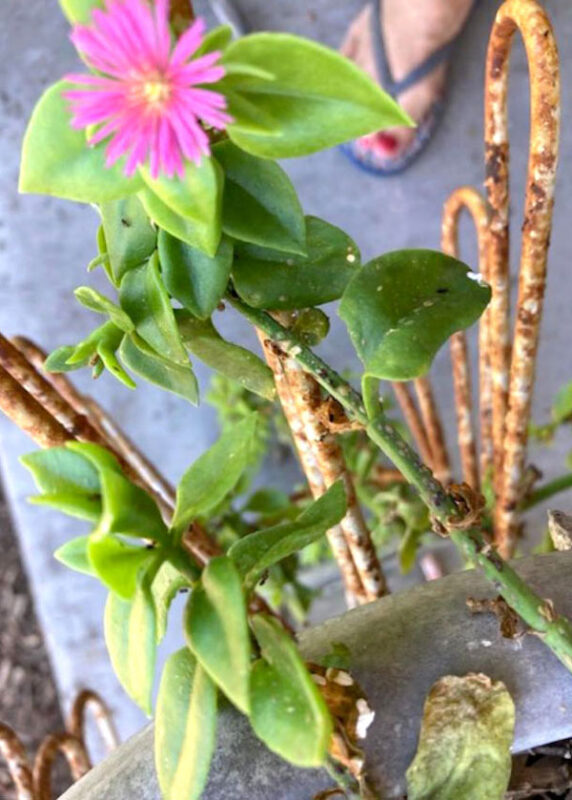
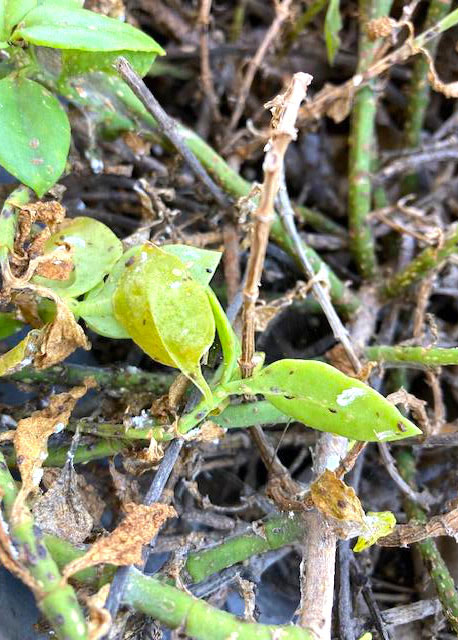
Images are clickable for larger views.
Answer: Everyone wants to say that their plant has suffered “root rot.” I almost never buy in on that diagnosis, but in this case, I believe that’s probably true. It looks like the plants quite possibly have suffered root loss due to waterlogged or compacted soils. Ice plants require perfect drainage. I can’t tell whether there are mealy bugs or other scale insects on the stems, but if so, they could certainly have played a major part in the decline. Press on some of those raised white things to see if there are fluids within them. I would examine your plants closely, then also check to see if there are any insects visible. If so, use a general-purpose insecticide that is labeled to control scales. Check to be sure that it is cleared for use on ice plants.

